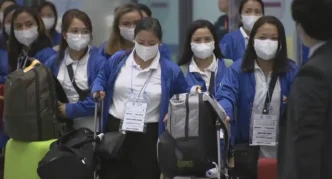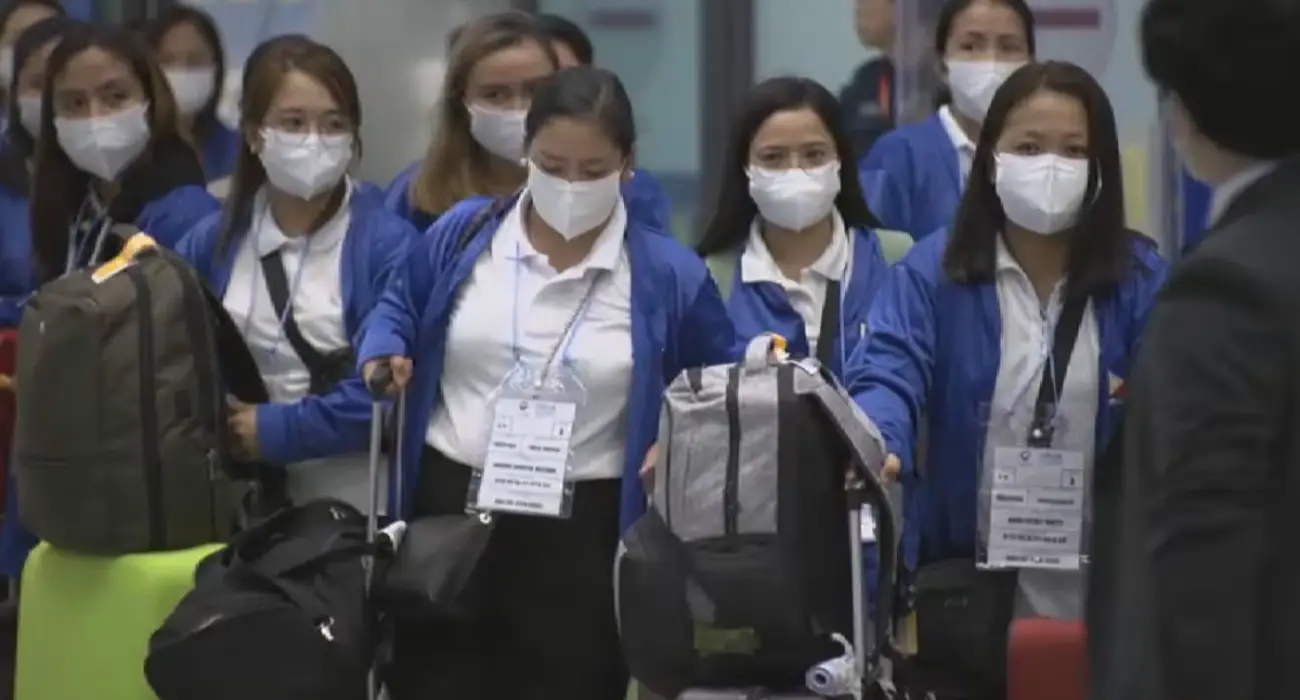Thousands of Filipino workers hoping to secure employment in South Korea under a long-negotiated domestic worker program face uncertainty as a change in Seoul’s administration has stalled progress. The initiative, aimed at addressing labor shortages in South Korea while providing economic opportunities for Filipinos, now hangs in the balance, raising questions about the future of bilateral labor agreements in the region.
A Promising Agreement Hits a Roadblock
The Philippines and South Korea have been working on a framework to send Filipino domestic workers to the latter since discussions intensified in recent years. The program, seen as a win-win for both nations, would allow South Korea to fill gaps in its caregiving and household sectors amid an aging population, while providing Filipino workers with higher wages and better working conditions compared to many other destinations. However, a recent shift in South Korea’s government has introduced new priorities and policy reviews, leaving the program’s implementation on hold.
According to sources familiar with the negotiations, the previous South Korean administration had been close to finalizing the agreement, with pilot programs slated to begin in 2023. The change in leadership, however, has prompted a reassessment of foreign labor policies, with the new government reportedly focusing on domestic economic reforms over international labor deals. While no official statement has confirmed the program’s cancellation, the delay has sparked concern among Filipino officials and prospective workers alike.
“We were hopeful that this would open doors for many of our citizens” said a spokesperson from the Philippines’ Department of Migrant Workers. “We remain committed to dialogue with South Korean authorities to ensure the program moves forward.”
Economic Stakes for Filipino Workers
For the Philippines, overseas labor is a cornerstone of the national economy, with remittances from millions of overseas Filipino workers (OFWs) contributing significantly to GDP. In 2022 alone, remittances reached over US$36 billion, according to data from the Bangko Sentral ng Pilipinas, with a substantial portion coming from workers in Asia. South Korea, known for its relatively high wages and structured labor systems, was poised to become a key destination for Filipino domestic workers under the proposed agreement.
The potential economic impact of the delay is significant. Many Filipino workers, particularly women who form the majority of domestic labor applicants, had pinned their hopes on the program for financial stability. Training programs and recruitment processes were already underway in cities like Manila and Cebu, with costs borne by aspiring workers often running into thousands of Philippine Pesos (hundreds of US dollars). A prolonged delay could render these investments futile, adding to the frustration of those who saw the program as a pathway out of poverty.
Beyond individual losses, the stall could affect broader economic ties between Manila and Seoul. The Philippines has long sought to diversify its labor export markets, reducing reliance on traditional destinations like the Middle East, where workers often face challenging conditions. South Korea, with its reputation for better labor protections, represented a safer and more lucrative option. If the program falters, it may signal challenges for similar agreements with other nations.
South Korea’s Domestic Priorities
On the other side of the equation, South Korea’s new government appears to be grappling with internal pressures that have sidelined the domestic worker program. An aging population and declining birth rates have intensified the need for foreign labor in sectors like caregiving, but political debates over immigration and national identity have complicated policy decisions. Some factions within the current administration are said to favor stricter controls on foreign workers, arguing that such programs must be carefully balanced against domestic employment opportunities.
Analysts note that South Korea’s labor policies are often shaped by public sentiment, which can be wary of rapid demographic changes. While the country has relied on foreign workers in industries like manufacturing for decades, the integration of domestic workers into private households raises unique cultural and social considerations. “There’s a hesitation to open up certain sectors to foreign labor, especially when it involves close personal interaction” said Dr. Hye-jin Kim, a labor policy expert based in Seoul. “The government may need more time to build public consensus.”
Additionally, South Korea is navigating its own economic challenges, including inflation and a competitive job market for younger citizens. These domestic priorities could explain why the administration has yet to commit to a timeline for resuming talks with the Philippines.
Impact on Bilateral Relations
The delay in the domestic worker program comes at a time when South Korea and the Philippines are seeking to strengthen broader ties. The two nations have deepened economic cooperation in recent years, with South Korea investing heavily in Philippine infrastructure and technology sectors. A successful labor agreement could further cement this partnership, signaling mutual trust and shared goals. Conversely, a failure to resolve the current impasse may cast a shadow over other collaborative efforts.
Philippine officials have emphasized their desire to maintain positive relations despite the setback. “We understand that each government has its own priorities and timelines” said a representative from the Department of Foreign Affairs in Manila. “Our focus is on finding common ground and ensuring that any agreement benefits both sides.”
For now, the Philippine government is exploring contingency plans, including negotiations with other countries for similar labor programs. However, South Korea remains a preferred partner due to its proximity, economic stability, and established systems for migrant workers.
Human Stories Behind the Policy Delay
Behind the diplomatic and economic discussions are the personal stories of Filipino workers caught in limbo. Maria Santos, a 34-year-old mother of two from Quezon City, had completed months of training and language courses in preparation for deployment to South Korea. “I borrowed money to pay for the fees because I believed this was my chance to give my children a better life” she said. “Now, I don’t know if I’ll ever get to go.”
Stories like Maria’s are common among the thousands of applicants who saw the program as a lifeline. Many have expressed frustration over the lack of clear communication from both governments about the program’s status. Advocacy groups in the Philippines have called for greater transparency and support for affected workers, including refunds for training costs if the program is ultimately shelved.
Meanwhile, in South Korea, families and employers who anticipated the arrival of Filipino domestic workers are also feeling the impact. With local caregivers in short supply, some have turned to informal networks or other nationalities for support, often at higher costs or with less regulatory oversight.
Looking Ahead: Uncertainty and Hope
As both nations navigate this complex issue, the future of the domestic worker program remains unclear. For the Philippines, the delay underscores the vulnerability of relying on overseas labor markets, prompting calls for domestic job creation as a long-term solution. For South Korea, the situation highlights the delicate balance between addressing labor shortages and managing domestic political concerns.
Observers remain cautiously optimistic that dialogue will resume in the coming months, potentially leading to a revised agreement that addresses the concerns of both sides. Until then, thousands of Filipino workers wait in limbo, their dreams of a better future hinging on decisions made in faraway boardrooms and government offices. The resolution of this issue will likely set a precedent for how labor migration is managed in an increasingly interconnected region, with implications far beyond Manila and Seoul.
















